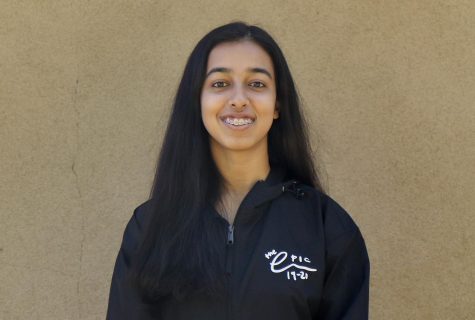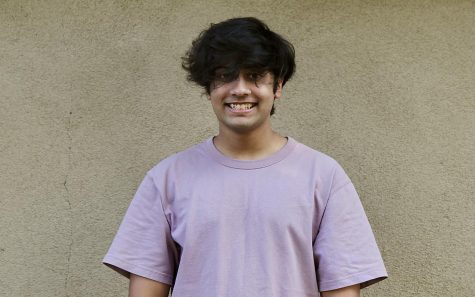Exploring eastern medicine and holistic healing
April 10, 2020
In the past few centuries, medicine based on modern science has become the leading form of treatment for ailments, especially in the West. Modern medicine, which includes vaccines, antibiotics and hormonal treatments, has greatly increased human longevity and continues to benefit millions across the world. However, holistic healing, a form of medicine that focuses on the well-being of the entire body, has remained a prominent part of Eastern medicine for millennia.
These traditional methods of healing are still used in countries such as China and India and in many Native American cultures. In fact, holistic medicine has grown popular in Western culture as well. World-renowned athletes like Michael Phelps and Draymond Green have dabbled in holistic treatments, such as acupuncture and fire cupping, in order to relieve muscle tension and aid recovery. These athletes and many others have begun to realize the potential benefits to these previously dismissed healing methods.
Although they have been practiced for hundreds of years, many forms of holistic medicine have proven to be pseudoscience. For example, homeopathic medicine, a well-known form of holistic healing in India and Germany, is based on the principle that “like cures like”: if an illness produces tears, homeopathic doctors will often ground up onions and dilute them into water to treat the ailment. Homeopathy users believe the active ingredient will leave its spiritual mark on the diluent, making the liquid remember its properties. This causes the diluent to act as if the active ingredient was in the liquid. Because of its dubious reasoning and unproven benefits, homeopathic medicine and other holistic healing practices have been dismissed as ineffective by major health organizations.
(should be expert quote here; introduce in the above paragraph)
Despite Western apprehension, holistic healing continues to be a widely used form of medical care in many Eastern communities. Among most of these communities, the belief that the body has an innate inner balance is a foundation for the treatment of ailments and illnesses, which are seen as imbalances in the body.
For example, Ayurveda, one of the oldest healing systems that originated in India more than 3,000 years ago, is based on the idea that balance between the body and spiritual energies needs to be maintained through practices such as special diets, meditation, yoga and herbal remedies. Such beliefs have been passed down through generations and have become integral forms of treatment in many cultural traditions. Furthermore, many people practice these traditions to stay rooted in their respective culture and to maintain spiritual hope for their recovery.
Suchitra Choudury, a longtime reiki practitioner, says Ayurvedic medicine plays a large role in her daily life. She believes that Ayurveda has played a key factor in boosting her longevity.
“I’m 70 years old and still working,” Choudury said. “Reiki and ayurvedic medicine keeps my body and mind in balance.”
Critics of holistic healing, however, have attributed the successes of alternative medicine such as Ayurveda to the placebo effect. Believers of holistic healing trust the practice because of the perceived professionalism of holistic medicine consultations and the client’s expectations for the treatment to work. Despite this, the American Health Organization stated that there was no conclusive evidence that determines the effectiveness of alternative medicine.
[student/teacher interview about their experience learning about traditional medicine]
On the other hand, other practices in Eastern medicine have been proven by research to scientifically be beneficial to the long-term well being of the body. Acupuncture, a mode of muscle relief and stress management that originated in China, has been widely studied by traditional scholars in China and scientists in the West. The practice involves the insertion of needles into specific areas in a patient’s body called acupuncture points that become tense due to pain or stress.
The goal of acupuncture is to restore the balance of Qi, energy that is believed to flow throughout the body. Although the traditional explanation may seem too spiritual to be truly scientific, Western research has proven that the insertion of needles is an effective way to stimulate the body’s nerves, allowing the blood to flow more freely and thus relieving nerve tension and pain. Since the 20th century, the practice has been adopted by Western medicine, specifically in the U.S.
“Acupuncture can be used to restore the balance in your body,” said Quli Zhou, a practicing acupuncturist. “Especially during teenage years, there are many unstable hormonal changes, like acne, menstruation pain or even ADHD, so acupuncture can help you gain clarity and calmness in your life.”
As Western science and medicine continue to progress, the conflict between Eastern and Western practices also continues to grow. The complexity of many health issues in the world has led experts to discourage the widespread use of home remedies that may hinder the improvement of general public health. Issues such as the lack of administration of vaccines due to disbelief in modern medicine have caused health issues in many communities, as such disbelief prevents the possibility of communities to be free of harmful — and sometimes lethal — diseases.
Nevertheless, a balance between the increasingly popular Eastern medicine and more established Western medicine is gradually becoming an accepted system of health care. Endorsements by celebrities such as.. and trends like Buddha Bowls and Sattvic Diets are popularizing these ancient traditions in the Western world. The notion that a healthy lifestyle is imperative for long-term wellness and success has largely caused the adoption of Eastern medicine in the West.
“One day, I want to see pharmacies and herbal stores next to each other, so that people have a choice between what they want to use,” Zhou said. “It is great to have two choices.”




























































